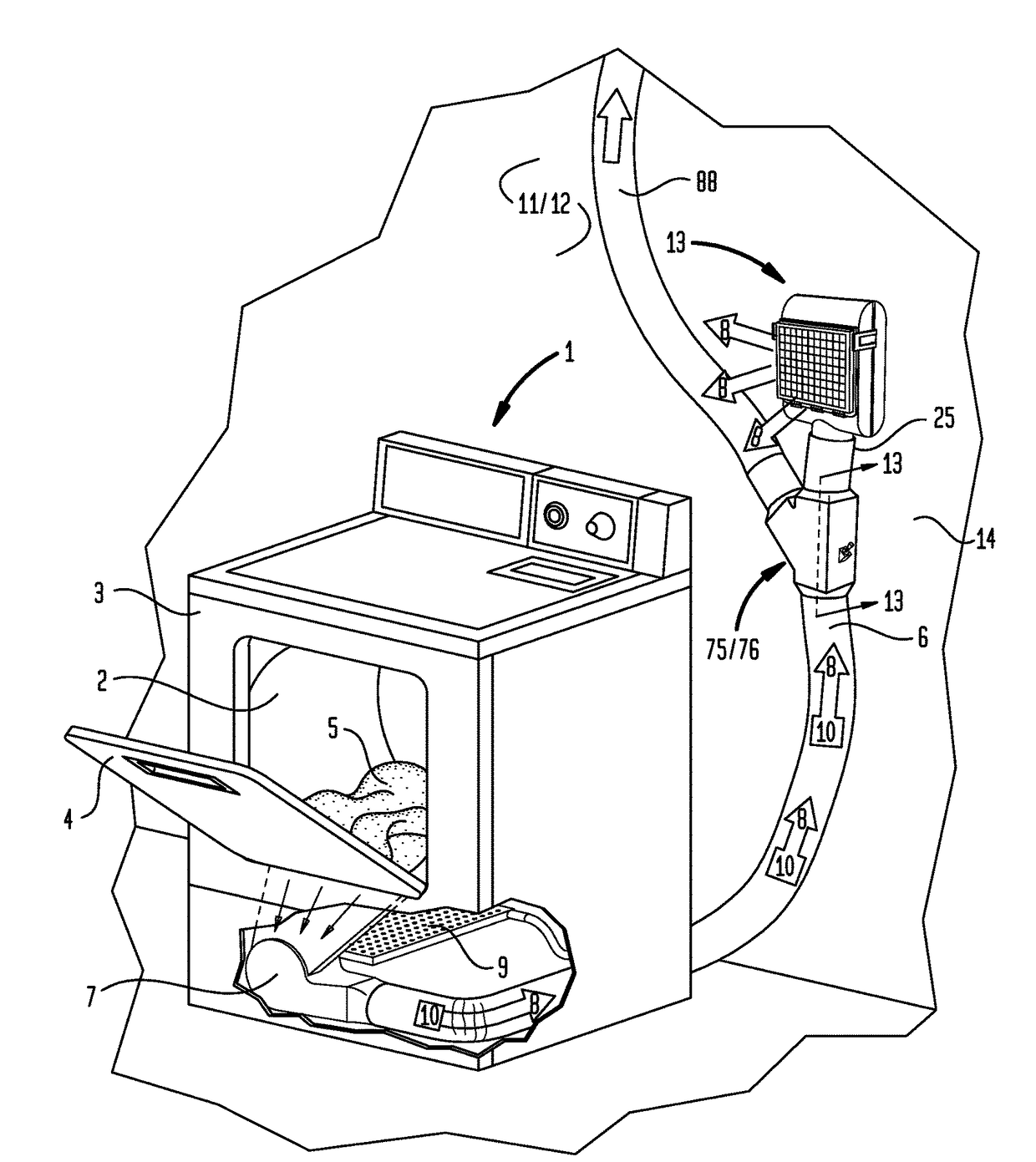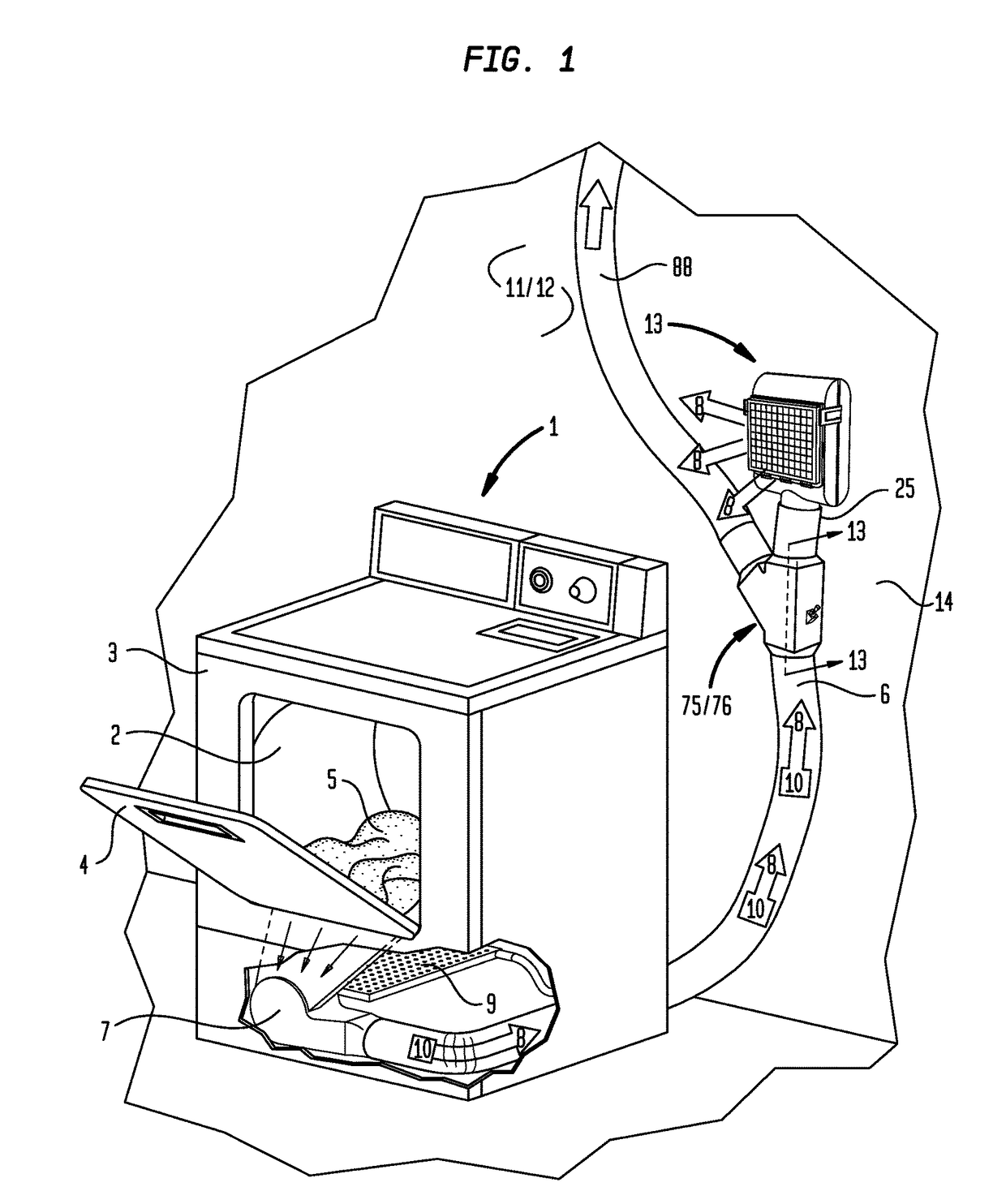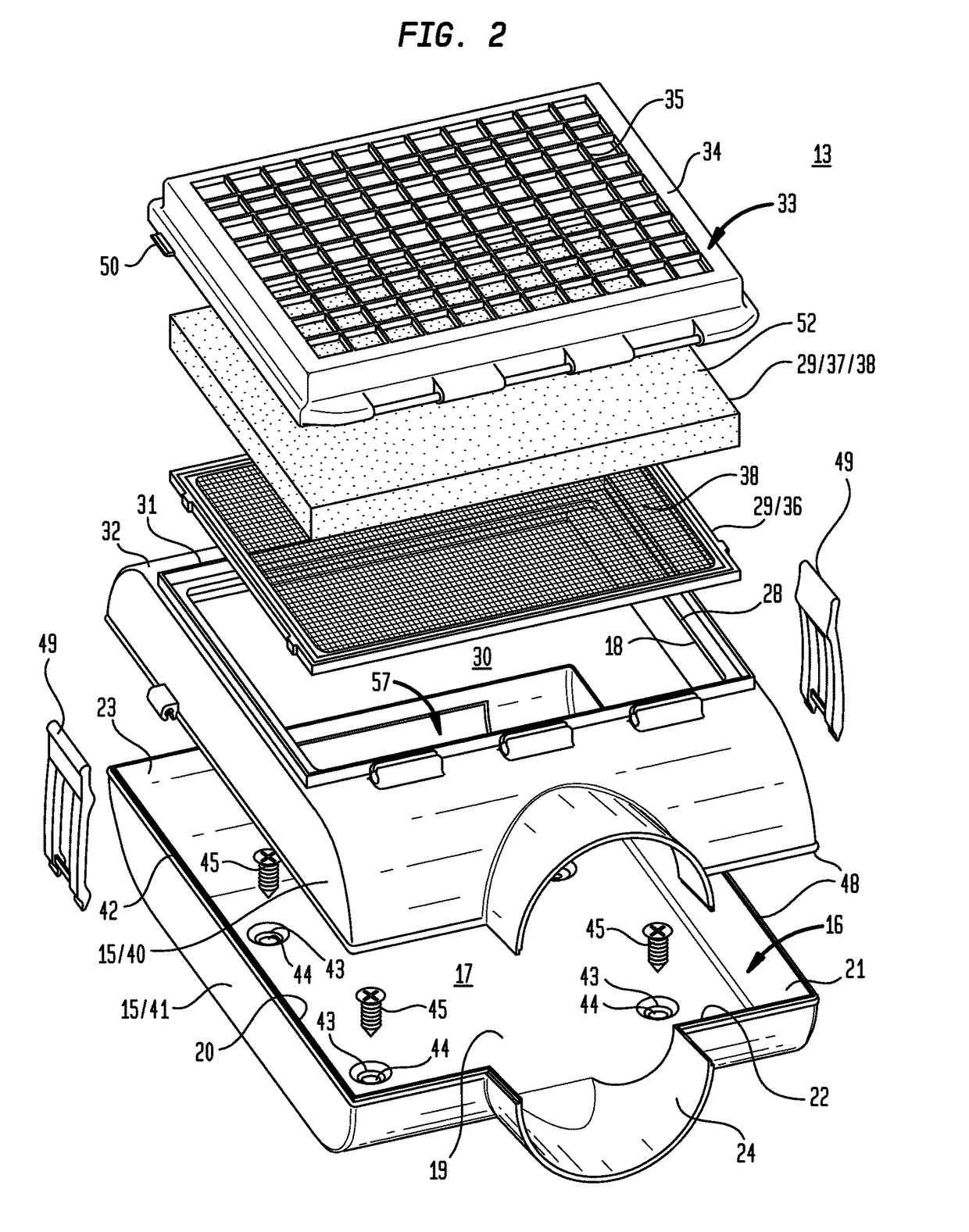Lint catching system and exhaust assembly
a technology of lint catching and exhaust air, which is applied in the direction of laundry driers, lighting and heating apparatus, and textiles and paper, etc. it can solve the problems of unsuitable direct emission of lint into the interior room of a commercial or residential building, lint is also known to damage mechanical devices, and still contains a substantial amount of lint, so as to enhance the laminar flow of lint, enhance the uniform velocity of lin
- Summary
- Abstract
- Description
- Claims
- Application Information
AI Technical Summary
Benefits of technology
Problems solved by technology
Method used
Image
Examples
Embodiment Construction
[0032]Now referring primarily to FIG. 1, particular embodiments of the invention include a clothes dryer (1) having a rotatable drum (2) operationally disposed in a clothes dryer housing (3). A door (4) can be disposed in the clothes dryer housing (3) to allow access to the rotatable drum (2). Dryable material (5) can be introduced and removed from the rotatable drum (2) through the door (4). A conduit (6) can be coupled to the rotatable drum (2) and an air flow generator (7) disposed in the conduit (6) can move exhaust air (8) from the rotatable drum (2) through the conduit (6). A heating element (9) can be configured to heat air (10) flowing into the rotatable drum (2). The rotatable drum (2) containing dryable material (5) generates an exhaust air (8) which flows through the conduit (6) laden with an amount of lint (10).
[0033]The term “clothes dryer” for the purposes of this invention means any manner of device that moves exhaust air (8) laden with an amount of lint (10) requirin...
PUM
 Login to View More
Login to View More Abstract
Description
Claims
Application Information
 Login to View More
Login to View More - R&D
- Intellectual Property
- Life Sciences
- Materials
- Tech Scout
- Unparalleled Data Quality
- Higher Quality Content
- 60% Fewer Hallucinations
Browse by: Latest US Patents, China's latest patents, Technical Efficacy Thesaurus, Application Domain, Technology Topic, Popular Technical Reports.
© 2025 PatSnap. All rights reserved.Legal|Privacy policy|Modern Slavery Act Transparency Statement|Sitemap|About US| Contact US: help@patsnap.com



